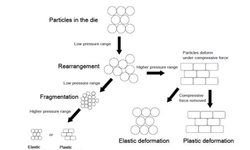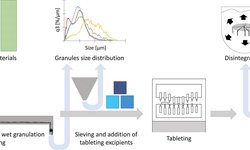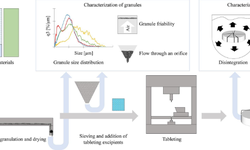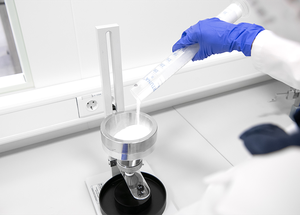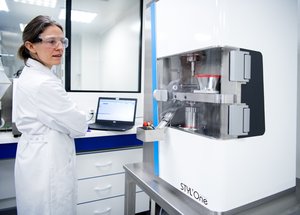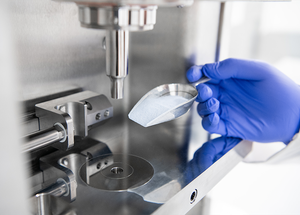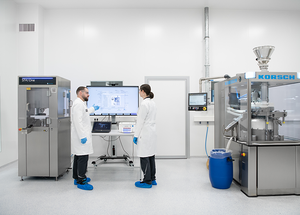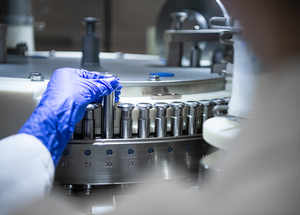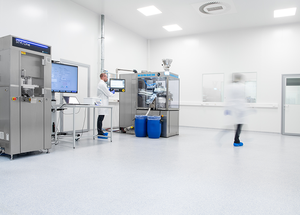Scientific papers
A comparative analysis was conducted on four granulation techniques to assess their impact on granule properties and tablet tensile strength. A common formulation was selected for processing through wet and dry granulation methods, including roll compaction/dry granulation, high-shear granulation, twin-screw granulation, and fluidized-bed granulation. The produced granules underwent characterization, considering granule size distribution, X-ray powder diffraction, scanning electron microscopy, porosity, and strength. Subsequently, the granules were tableted, and the resulting tablets were evaluated for tensile strength and mass variation. Particular attention was directed towards measuring granule strength. The findings revealed a significant influence of the granulation technique on granule strength. Furthermore, a nonlinear inverse correlation was observed between granule strength and tablet tensile strength. High-shear granulation generated the densest and strongest granules, leading to the lowest tablet tensile strength. Roll compaction/dry granulation demonstrated consistent tabletability with the selected formulation, even for highly compacted and robust granules. Tablets produced through fluidized-bed granulation exhibited superior properties in terms of tensile strength and mass variation. However, twin-screw granulation displayed comparable results for the specific formulation studied, indicating substantial potential for this technique.
Comments
No comments posted yet.
Add a comment

